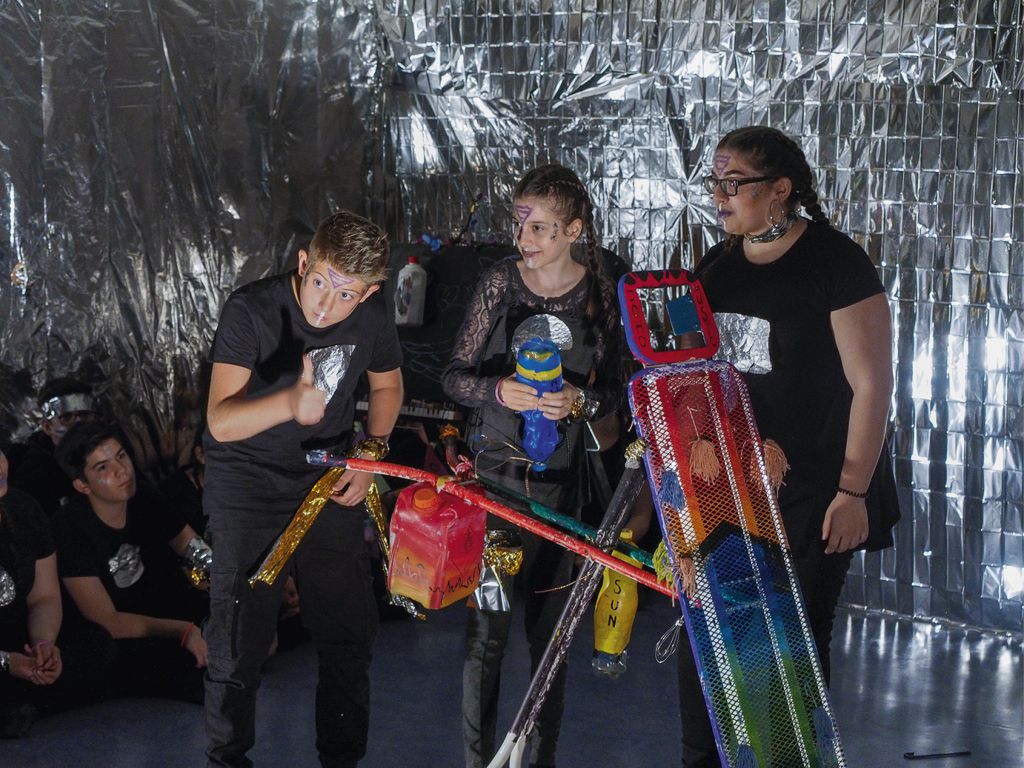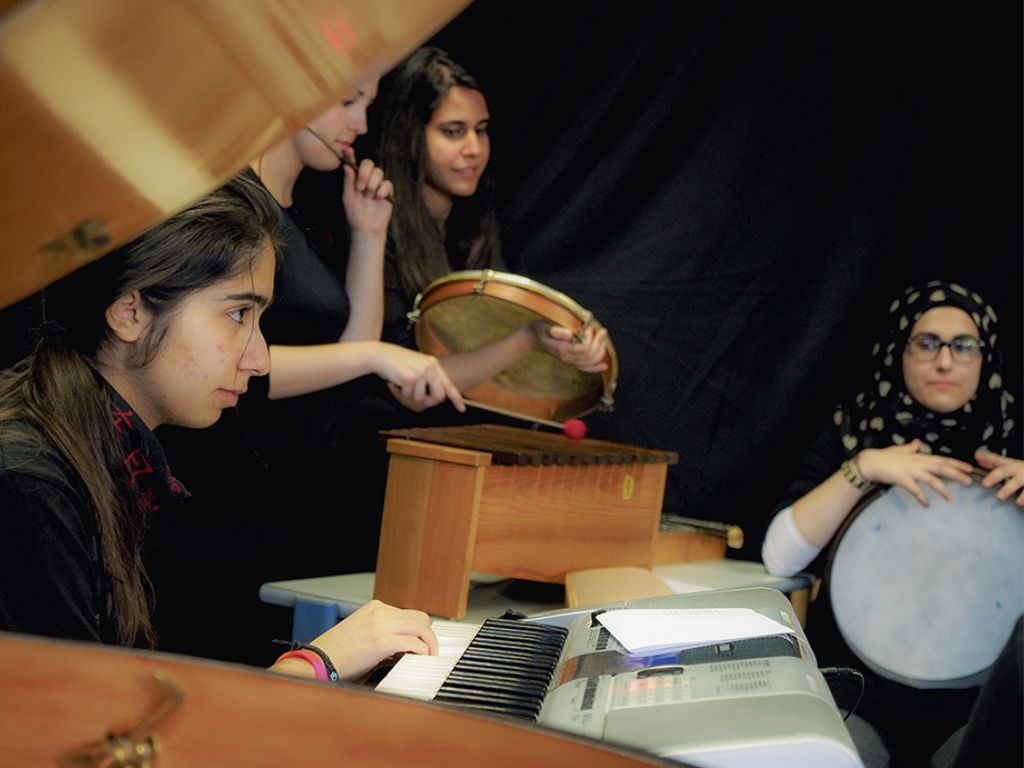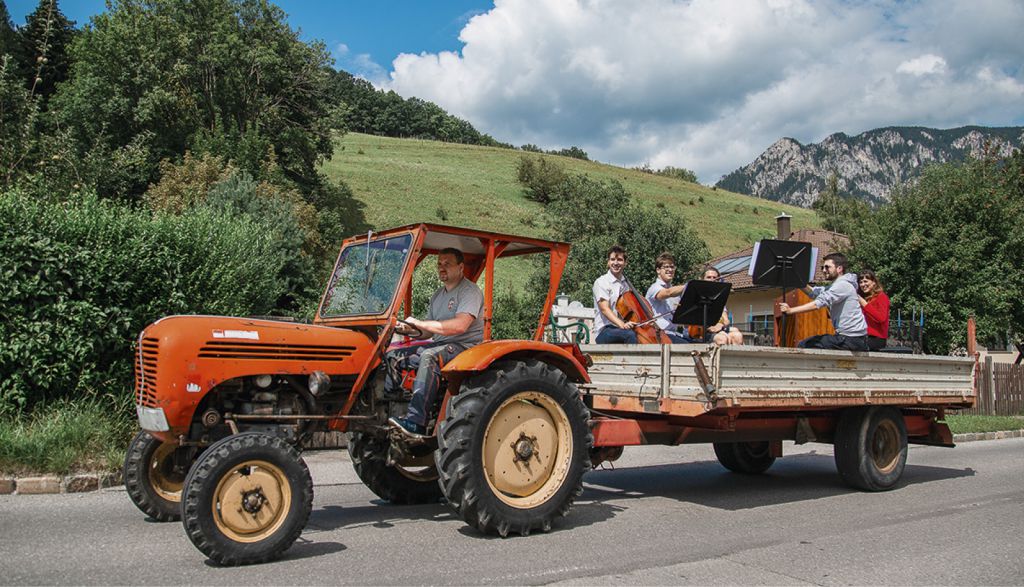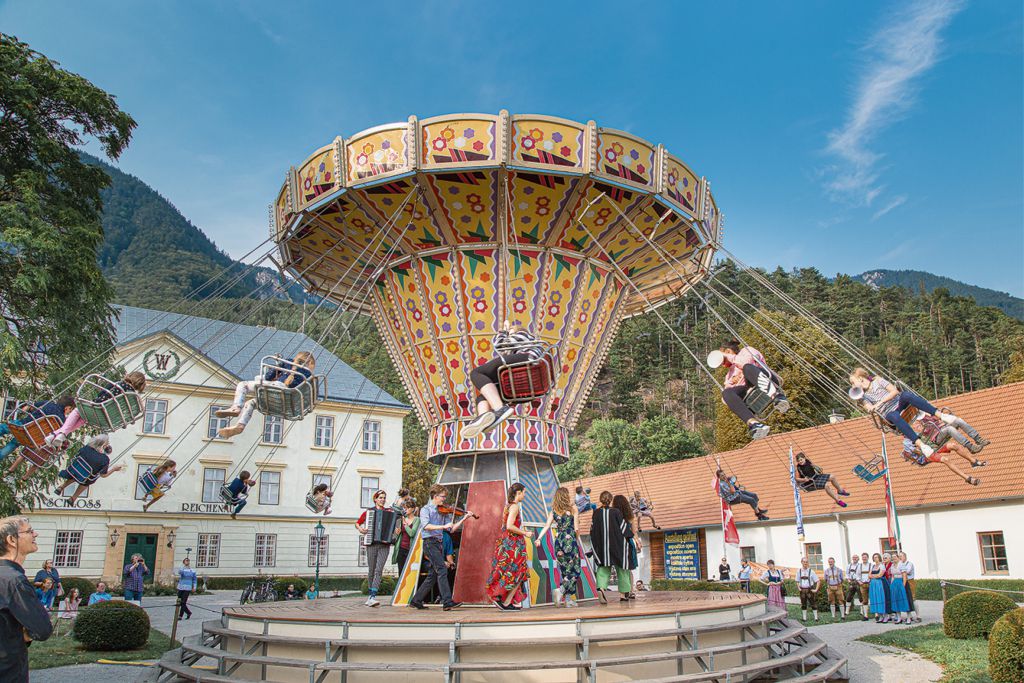Dietmar Flosdorf, Axel Petri-Preis, and Rineke Smilde teach at the Department of Music Education Research, Music Didactics and Elementary Music Education (IMP). mdw Magazine spoke with them about the community work they pursue.
What does community outreach mean in the context of music education, and what’s the main thing that outreach projects seek to accomplish?
Rineke Smilde (RS): I’m actually not so fond of the term “outreach”. It’s like: “I’m so good at what I do, I can even spare a bit for you.” No reciprocity at all. So I prefer to talk about “community engagement”, about dialogue between musicians and various social groups.
Axel Petri-Preis (AP): I also prefer community engagement, or community-building. It’s about building a community by developing shared ideas in a reciprocal process where everyone involved works together and possesses agency. The word “community” is often used in a fairly problematic way. Communities get constructed via the attribution of certain characteristics and commonalities to certain people—often giving zero thought to whether said people actually feel like a community themselves. But what this term really denotes, at its core, is people who think of themselves as a cohesive group on the basis of certain characteristics like shared values and goals. So it’s something that needs to be thought about with great care.
Dietmar Flosdorf (DF): We’re not missionaries. Anyone can be a singer or a musician and participate musically in their own environments, no matter whether they sing in a choir or make music at home—and that’s one kind of thing that makes them a community. Its definition is open-ended, which is one thing that makes working with this openness and diversity so interesting. Community engagement seeks to have people encounter each other on an even footing in and through dialogue with artistic excellence and commensurate works. And that’s why community engagement isn’t exclusively a music education topic.

Who’s addressed by such community projects?
DF: The goal is to fashion things in such a way that an open community arises where the greatest possible number of people can get involved. I realised a project together with students at the housing complex Am Schöpfwerk that was open to everybody who lived there. The place where that project was situated was predefined, but its concept was such that everyone could participate—people you’d otherwise meet anywhere from the youth centre to the school, the döner stand, or the mosque. The door was open, so whoever wanted to join in was welcome—it was inclusive.
AP: An important point is that community projects invite participation by everyone. And it gets particularly interesting when people of different backgrounds come together, people with different perspectives who normally wouldn’t meet. So these projects give rise to spaces of encounter where everyone enters into exchange with and through music.
RS: That generates empowerment for all those involved, and the learning processes play out with and through music. One example I’d mention here is the research project “ProMiMiC – Professional Excellence in Meaningful Music in Healthcare”, in which the mdw takes part: it has musicians work together with patients and nursing staff at hospitals. The result is an interprofessional learning process involving musicians, music therapists, and nurses that ultimately benefits the patients’ well-being. And it also quite generally trains medical eyes on the value of the arts in healthcare. Music’s in a position to accomplish this.
DF: Projects like that one have a huge effect on musicians. The kind of dialogue and exchange they make possible gives musicians an immediate, human-level experience of what music can do and how it radiates back on them.
AP: I’ll mention a concept here that was originated by the German sociologist Mark Terkessidis: he speaks of collaboration rather than cooperation. Terkessidis points out how people who cooperate tend to disperse afterwards just like they came together. But when collaboration takes place, everyone who’s involved changes for the better and is conscious of that change. In this context, I’d also mention the notion of “participatory art” introduced by François Matarasso, a British community artist and author. He views community projects as things that involve artists and “non-professional artists”. And I think that’s an important statement: everyone who participates is an artist, professional or not. What’s essential here is the basic assumption that everybody can participate equally and work together on the same level.

How do students get introduced to community work, and what do they end up learning from it?
DF: A project always represents an opportunity for the participating students to reorient themselves and grow, not only in terms of their instrumental and technical abilities but also on the human level, allowing them to perceive their own value and roles in society in a new way.
AP: I can tell you about one effort that involved collaboration between artists, music education students, and school students. This was a participatory art project where our goal was to create a music theatre work together. It was an open process whose outcome didn’t have to meet any specific requirements. For many of the students, this was a new experience; they at first thought (perhaps due to certain kinds of teaching they’d experienced) that the teacher surely had to know what the final result was supposed to be. But the proposal I made to them was this: let’s just all set out on a journey and trust that something great will come of it, since we’re going to do good work together. Once the initial scepticism had passed, I eventually began getting feedback to the effect that they found this kind of work liberating. These students learned to turn responsibility over to the group and to trust in the knowledge and abilities of the group’s members so that something exciting could result.
DF: Trust is important, but one does need to do some preliminary work on the concept and other things beforehand. The setting has to be prepared and adapted to allow shared creativity to arise between the university students and the non-professional artists. And as far as the students themselves go: it’s important to realise that a university of music is an exclusive place of training. Many of those who study there come from specific social contexts that offered them a special kind of early and/or high-quality support. Community work is an opportunity for such students to escape their own bubbles and make contact with other social realities, which can also allow them to perceive new areas of activity and give them a broader look at the question of what all art can do and what their mission can be in that context. The pandemic we’ve been experiencing over the past year has showed us how culture can be marginalised, but such situations can also highlight new fields and political realms—like social issues and education—where artists can get involved.
RS: It’s also about how teachers teach at the University and how we set up our learning environments. The focus is often on formal requirements that define desired outcomes right from the get-go. But that doesn’t help students learn to deal with risk or to extend trust. So if we want musicians who are trusting, have a broad view of society, and also possess strong artistic identities, the University needs to do something to make this possible. And it’s also important for teachers to question themselves and always remain curious.

How can the long-term success of a community project be measured?
RS: In the hospital project I mentioned before, we measured patients’ pain sensitivity prior to, during, and four hours after the music. We’d expected the music to reduce their pain levels, but they still had less pain even four hours later. That’s something that can be clearly measured. Many of the effects, however, are implicit and become evident on the social level—which is why I prefer to speak of “impact”, like when we look at how such a project changes the way nursing staff and patients interact. And when the hospital personnel and patients say, “We need our musicians,” that’s also indicative of a lasting impact.
DF: I called on support from the Department of Music Sociology to evaluate surveys of our participating school students before, immediately after, and one year after our project. Their answers indicated lasting changes in attitudes linked with their approach to and need for the arts as well as with making music together.
AP: In terms of reciprocal collaborative processes, we can speak of success if all of the participants have changed and are able to reflect on these changes. These things sometimes happen implicitly, which makes them difficult to measure, and some effects can’t be measured right away. I’m convinced that community work has a lasting impact when it gets viewed as an ongoing and positive learning process for all participants. Everyone brings knowledge and other priors to the table that differ and can’t be related to each other in any kind of hierarchical way.
DF: We encounter people, persons (Latin: per-sonare—which is to say: individuals “through” whom something “sounds”) together with everything that defines them as personalities. And in community projects, everybody is invited to contribute and thereby enrich or change the “overall sound” thanks to the encounter. A project is “successful” if we manage to create the space and trust needed for everyone to be able to do so. This is a message that’s also important for the students to get, which makes its impact that much more durable.
What conditions are important to the success of community work in terms of what both the mdw and cultural policy can offer?
DF: The current Rectorate has shown a great deal of openness and understanding when it comes to community work—including in the spirit of the institution’s third mission, to which they’ve shown considerable commitment. We still have the potential to do more, of course, but the developments in this area over the past few years have been highly encouraging.
AP: In terms of cultural policy, it should be mentioned that the City of Vienna is doing new things to reinforce community work—like providing increased funding to initiatives such as Brunnenpassage, which has devoted itself to the theme and now has more latitude in its projects.
DF: There’s also the city’s new “KulturKatapult” call, where they’re for the first time looking specifically to support projects with young apprentices—and the fact that the mdw is now among the organisations being supported by them in the wake of my submission is a positive sign.
RS: I’ve seen a lot of positive developments under this Rectorate. The important thing here is the fundamental attitude toward community work rather than the absolute number of projects. And the University can do quite a bit in terms of where artists stand socially.

What community work experiences have you found memorable, and what’s the driving force behind your efforts?
RS: The first time we ran that project at the hospital, a patient was there who lay dying after having been in an accident. The musicians played “Can’t Help Falling in Love with You” for him. He started making sounds—which initially horrified me, but then I realised he was singing. He sang even though he lay there dying. That was an intense experience.
AP: For me, it’s an immense joy when projects give rise to exchange between people with different perspectives, when all hierarchies are overcome and the communication takes on a kind of symmetry that benefits everyone. I’m motivated again and again by my desire to experience that.
DF: I’ll answer this question with an anecdote: we were once discussing ideas for a composition together with a middle school class in a project we did at the Am Schöpfwerk housing complex. At one point, a student was supposed to write “Partitur der Klasse 3B” [Group 3B’s Score] on the board as a heading. But instead of Partitur [score], she wrote “Partyuhr…” [Party (O’)Clock]—and to my mind, that was fantastically suggestive of how what we were doing there was landing: we’d worked together to organise a party. It was a totally authentic testament to this work’s effectiveness. Who can resist that kind of feedback?
RS: This kind of work allows people to realise: music is something that comes from all of us.
For more information on these projects, see the “Music in Dialogue” page at the IMP’s web presence: mdw.ac.at/imp/musik-im-dialog
ProMiMic: mdw.ac.at/promimic

